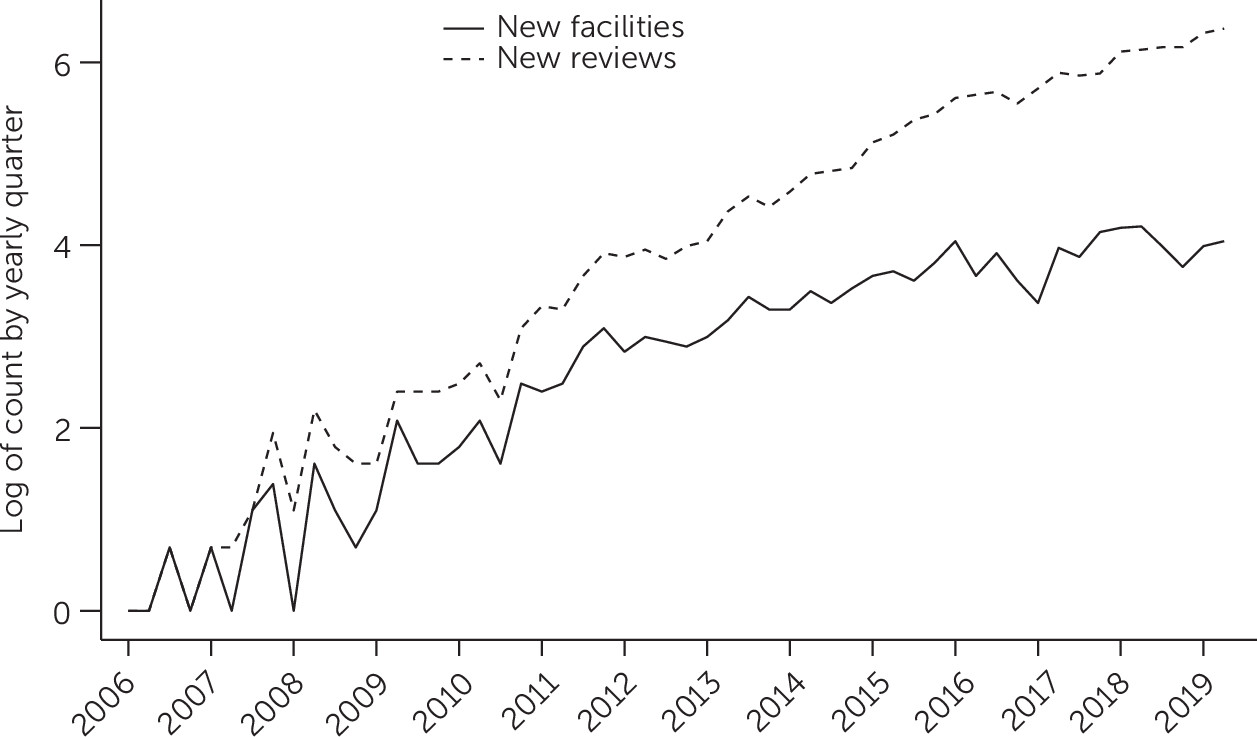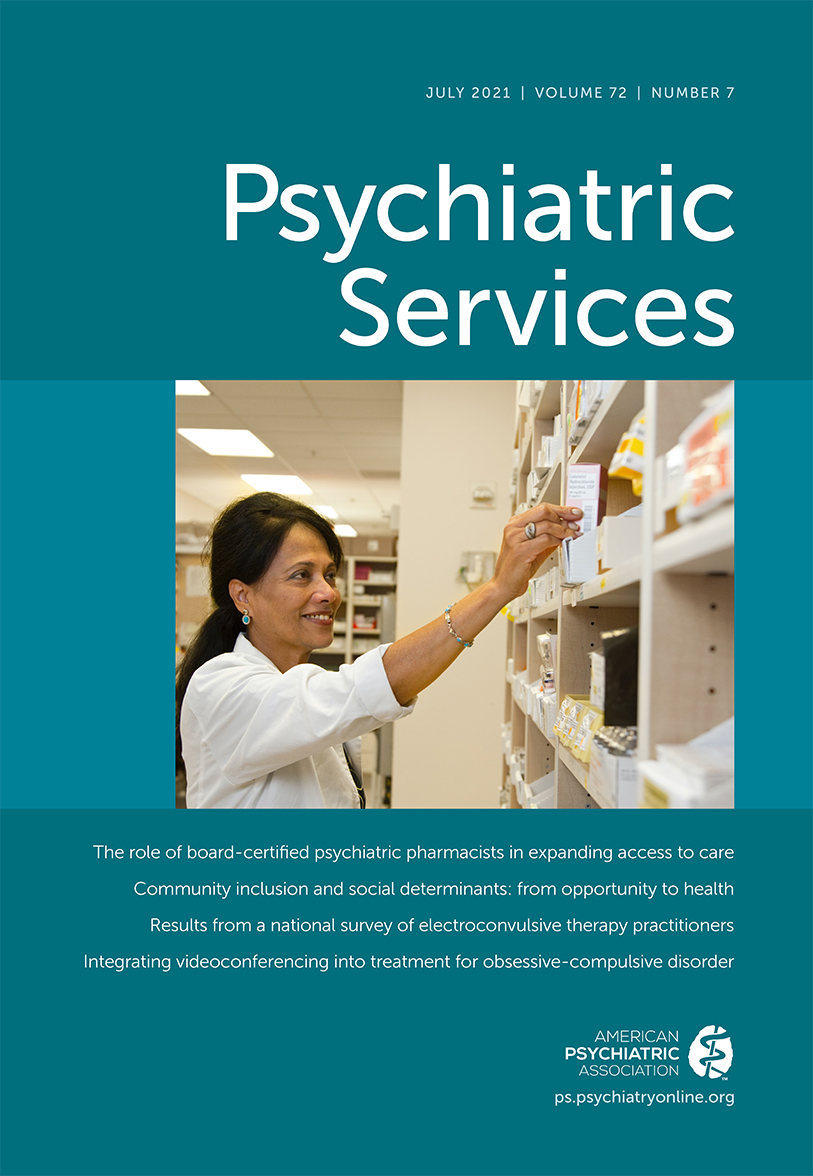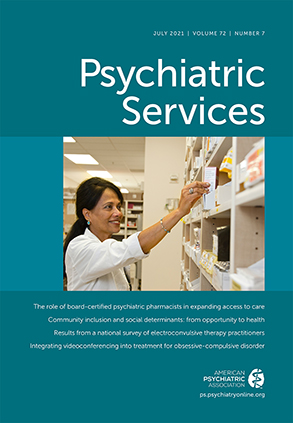Online Reviews of Mental Health Treatment Facilities: Narrative Themes Associated With Positive and Negative Ratings
Abstract
Objective:
Methods:
Results:
Conclusions:
HIGHLIGHTS
Methods
Study Sample
Review Analysis
Survey Analysis
Statistical Analysis
Results
Study Sample
| Facilities with Yelp reviews | Facilities without Yelp | ||||
|---|---|---|---|---|---|
| (N=1,383) | reviews (N=8,808) | ||||
| Characteristic | N | % | N | % | p |
| Regionb | <.001 | ||||
| Northeast | 254 | 18.4 | 1,941 | 22.0 | |
| South | 358 | 25.9 | 2,682 | 30.4 | |
| Midwest | 303 | 21.9 | 2,303 | 26.1 | |
| West | 468 | 33.8 | 1,806 | 20.5 | |
| Service settingc | |||||
| Hospital inpatient | 396 | 28.6 | 1,233 | 14.0 | <.001 |
| Outpatient | 1,113 | 80.5 | 7,012 | 79.6 | .478 |
| Partial hospitalization or day treatment | 369 | 26.7 | 7,544 | 14.4 | <.001 |
| Residential | 218 | 15.8 | 1,237 | 14.0 | .097 |
| Telemedicine/telehealth | 513 | 37.1 | 3,358 | 38.1 | .481 |
| Special programming for specific groupsc | |||||
| Young adults | 356 | 25.7 | 1,907 | 21.7 | <.001 |
| Seniors | 460 | 33.3 | 2,300 | 26.1 | <.001 |
| Veterans | 291 | 21.0 | 1,436 | 16.3 | <.001 |
| Lesbian, gay, bisexual, or transgender clients | 426 | 30.8 | 1,838 | 20.9 | <.001 |
| Persons with co-occurring mental and substance use disorders | 827 | 59.8 | 4,430 | 50.3 | <.001 |
| Persons living with HIV/AIDS | 204 | 14.8 | 920 | 10.4 | <.001 |
| Persons who experienced trauma | 681 | 49.2 | 3,844 | 43.6 | <.001 |
| Children or adolescents with serious emotional disturbances | 492 | 35.6 | 3,268 | 37.1 | .287 |
| Persons living with serious mental illness | 721 | 52.1 | 4,327 | 49.1 | .040 |
| Emergency mental health servicesc | |||||
| Crisis intervention team | 643 | 46.5 | 4,481 | 50.9 | .003 |
| Psychiatric emergency walk-in services | 512 | 37.0 | 2,914 | 33.1 | .004 |

Review Analysis
| Topic | Example reviewa | Spearman’s ρ |
|---|---|---|
| Positively correlated with review rating | ||
| Caring staff | “Everyone here [is] so nice and so helpful . . . from the front staff all the way to the doctors! . . . I’m very happy with the service I have received and continue to receive. Thank you everyone.” | 0.39 |
| Life-saving treatment | “If you are ready to get better and you work the program you will succeed! Staff is caring and compassionate. . . . They will fight for you, which at times you will hate, but in the end, it will save your life.” | 0.28 |
| Nonpharmacologic treatment modalities | “I did outpatient individual therapy, dietitian support . . . and . . . group therapy all in one building. . . . [Every] provider I worked with really genuinely cared for me.” | 0.16 |
| Therapeutic alliance with primary provider | “Dr M is the best. He listens and he shows concern as well as empathy. . . . I would highly recommend Dr M.” | 0.11 |
| Negatively correlated with review rating | ||
| Rude ancillary staff | “For how amazing and incredible the residential staff is, the front desk staff is arrogant, rude, and comes across as not caring. Front desk is the first impression. . . . It’s a shame it’s being ruined by your front desk staff.” | –0.14 |
| Safety and abuse | “I left with more psychological problems than when I arrived. The staff are not trained. . . . I laughed when they tried to stop bullying since the staff were the ones bullying children with name calling and brutal physical assaults.” | –0.14 |
| Billing and insurance | “I was lied to about insurance coverage . . . told multiple times that my insurance would cover it all and then got billed. . . . They’ll only take your insurance if you work for certain companies.” | –0.11 |
| Scheduling | “My family member has called almost every week to schedule an appointment now that she did her intake, and each time she calls they tell her that she has not been assigned a counselor and they transfer her to . . . voicemail. None of her messages have been returned. . . . It shouldn’t take 3 months to get an appointment. . . . Every time we ask to speak to the director, we are told that they are not in.” | –0.09 |
| Treatment for specific diagnosis | “Brought a person here who needed help with drug dependency and depression. . . . Patient was treated as if they were a criminal being booked into a jail. Still in search of dignified and compassionate care!” | –0.08 |
| Communication with family | “No communication with the families. No support for the families. When we picked up our loved one we were given ZERO information. No info about options of what the next steps should be once the patient leaves.” | –0.08 |
| Pharmacotherapy | “My counselor was great . . . but the Doctor got me hooked on antidepressants and after 4 years tried to discharge me after I missed some counseling appts. I ended up . . . thanking my counselor and told her that I would not be back and that I would ween myself off the meds.” | –0.06 |
| Nonsignificantly correlated with review ratingb | ||
| Child and adolescent treatment | “I was 14 years old when I was at this place. I hated the way the staff would treat us kids, they are there to help us not destroy our happiness. . . . Continuously put residents down as if they were trash. I’m almost 30 now and I’m still scarred and scared of that place.” | 0.01 |
| Inpatient facility amenities | “Their food is horrible. . . . Beds are trash. Worst ‘hospital’ ever. Extremely limited food, outside activity, phone calls, visitation, recreational exercise. The nurses go in your room every 5 seconds slamming doors open and shut in your shared room.” | –0.05 |
Survey Analysis
| Service | Spearman’s ρ |
|---|---|
| Most positively correlated with review rating | |
| Facility type | |
| Outpatient mental health facility | .13 |
| Residential treatment center for adults | .07 |
| Facility operation (e.g., private, public): Veterans Affairs Medical Center | .05 |
| Exclusive services: serves veterans only | .05 |
| Service settings: outpatient | .06 |
| Special programs/groups offered | |
| Lesbian, gay, bisexual, or transgender clients | .10 |
| Persons with posttraumatic stress disorder | .06 |
| Ancillary services | |
| Housing services | .07 |
| Intensive case management | .06 |
| Psychosocial rehabilitation services | .05 |
| Most negatively correlated with review rating | |
| Payment, insurance, funding accepted | |
| Medicare | –.21 |
| Medicaid | –.18 |
| Military insurance | –.16 |
| State welfare or child and family services funds | –.12 |
| Facility type: psychiatric hospital or psychiatric unit of a general hospital | –.19 |
| Service settings: hospital inpatient | –.18 |
| Emergency mental health services: psychiatric emergency walk-in services | –.17 |
| Language services: services for the deaf and hard of hearing | –.16 |
| Treatment approaches: psychotropic medication | –.15 |
| Tobacco screening services: screening for tobacco use | –.13 |
Discussion
Conclusions
Footnote
Supplementary Material
- View/Download
- 1.82 MB
References
Information & Authors
Information
Published In
History
Keywords
Authors
Competing Interests
Metrics & Citations
Metrics
Citations
Export Citations
If you have the appropriate software installed, you can download article citation data to the citation manager of your choice. Simply select your manager software from the list below and click Download.
For more information or tips please see 'Downloading to a citation manager' in the Help menu.
View Options
View options
PDF/EPUB
View PDF/EPUBLogin options
Already a subscriber? Access your subscription through your login credentials or your institution for full access to this article.
Personal login Institutional Login Open Athens loginNot a subscriber?
PsychiatryOnline subscription options offer access to the DSM-5-TR® library, books, journals, CME, and patient resources. This all-in-one virtual library provides psychiatrists and mental health professionals with key resources for diagnosis, treatment, research, and professional development.
Need more help? PsychiatryOnline Customer Service may be reached by emailing [email protected] or by calling 800-368-5777 (in the U.S.) or 703-907-7322 (outside the U.S.).

